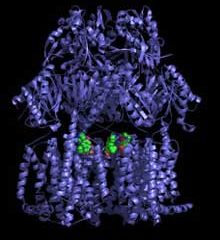Articles and reports from the Life Sciences and chemistry area deal with applied and basic research into modern biology, chemistry and human medicine.
Valuable information can be found on a range of life sciences fields including bacteriology, biochemistry, bionics, bioinformatics, biophysics, biotechnology, genetics, geobotany, human biology, marine biology, microbiology, molecular biology, cellular biology, zoology, bioinorganic chemistry, microchemistry and environmental chemistry.

Biologists have discovered what appear to be fundamental differences in the physical properties of the genetic material known as chromatin. Chromatin packages DNA into cells, and the scientists found the differences between chromatin that packages genes and the chromatin that packages DNA with regulatory or unknown functions.
The variation represents a previously unrecognized level of genomic organization and complexity, the scientists report, one that may exist in all cells with nuclei.

Findings may aid the development of drugs to treat thyroid disorders
Structural analysis has revealed for the first time how a key messenger in the body’s chemical communication system hooks up with one of the proteins that delivers it to sites of action in the body.
Using X-ray crystallography, scientists from Imperial College London and the University of Hawaii have identified the location of four binding sites on human serum albumin (HSA), the principal protein in blood pl

Center for Behavioral Neuroscience (CBN) researchers have demonstrated that genetically identical mice placed in different environments both pre- and post-natally differ dramatically as adults in their stress responses and learning abilities. The finding, reported in the May issue of Nature Neuroscience, suggests that pre- and post-natal maternal environments, when taken together, play a strong role in determining the stress profile and cognitive development of genetically identical mice.
I

Investigators at the Research Institute of the McGill University Health Centre (MUHC) have identified a gene that regulates the susceptibility to tuberculosis. This finding is published in this week’s edition of the Proceedings of the National Academy of Sciences.
Tuberculosis, an infectious disease caused by the bacteria Mycobacterium tuberculosis, affects approximately 1.9 billion people worldwide. However, a large proportion of these individuals do not develop tuberculosis symptoms. The

In the race to stay one step ahead of drug-resistant bacteria, scientists from Lawrence Berkeley National Laboratory and the University of California at Berkeley obtained high-resolution images of a protein complex found in bacteria that repels a wide range of antibiotics.
The images, which appear in the May 9 issue of Science, offer new insight into how bacteria survive attacks from different antibiotics, a growing health problem called multidrug resistance. As the team learned, these robu

Prions—their existence is intriguing and their links to disease are unsettling. These unconventional infectious agents are involved in mad cow disease and other fatal brain illnesses in humans and animals, rattling prior assumptions about the spread of infections.
Dartmouth Medical School biochemists studying the mysteries of these prion particles have discovered a novel step in their formation. Their results, reported in a recent issue of Biochemistry could help provide a new approach for